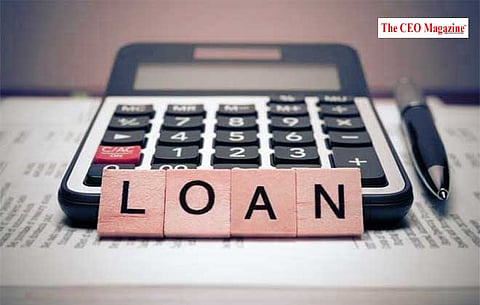
- News
- Women
- Magazine
- IndustryIndustry
- InsightsInsights
- Success Stories
- PublishPublish
- ContactContact
- Media KitMedia Kit

With the prices of gold rising in the international market, people are using gold loans as a very viable mode of loan. The borrowers can thus receive a higher loan amount for the same quantity and quality of gold. Furthermore, the Reserve Bank of India (RBI) allows banks to lend up to 90% on gold loans.
The amount is determined by the gold value provided by the client as security. Yellow metal LTV (loan to value) for NBFCs (non-banking financial companies) can reach 75%. If the LTV exceeds this limit, the lender may allow prepayment. As a result of the price hike and the increase in LTV, we can say that demand for gold loans has risen.
We will discuss in the following post why gold loans were initially so popular during the Coronavirus era. Several factors determine gold prices. We will also discuss how the changes in the price of yellow metal affect the demand for gold loans in India.
The government announced several economic stimulus packages. Their purpose was to increase market liquidity. A moratorium on loan repayments was also introduced by the Reserve Bank of India (RBI). Because interest rates on other investments were falling, several investors thought it was better to invest in gold. Additionally, stocks were volatile.
Gold's international price heavily influences the gold price in India. The price of the precious metal rose in the international market due to the rising number of Covid-19 cases around the world, the global economic slump, and the United States-China tensions.
In the wake of the lockdown, the rupee has declined sharply. Due to fluctuating exchange rates, gold prices fluctuated. If gold imports are high, the precious metal price rises as well.
Following the initial increase in gold prices, the precious metal price gradually stabilized. Prices began to fall. The amount that can be borrowed decreases as the gold price falls. A bank may request part prepayment from an existing borrower. However, this is only likely if the price of yellow metal is significantly corrected.
The likely outcomes are as follows:
Part-Prepayment: The lender can request a part-prepayment at any point in time in the case of a demand loan. This can happen when the LTV rises after a gold price correction.
Additional Collateral: The lender can also request additional collateral from the borrower. This is being done to bring the loan-to-value ratio to a satisfactory level.
The financial institution may consider the past one month's record in determining the gold value. The moving average price or the current price, whichever is lower, may be analyzed. The lender can take necessary precautions to deal with any short-term fluctuations in gold prices through this step.
● For NBFCs and banks, higher LTVs mean higher risk.
● The loan-to-value ratio is limited to a lower level.
● Gold loans are limited to 90% of the gold value.
● In this case, the bank can only finance short-term loans up to 80% or 85%.
● Depending on the tenure, the LTV may be even lower, say 75% or less.
Gold collateral was valued at Rs. 2 lakhs during a surge in gold prices. A bank lent the borrower Rs. 1,60,000. Accordingly, the loan to value ratio was 80%. The LTV would be 88.88% if the yellow metal's price fell to Rs. 1,90,000. A bank may require additional security in such a scenario.
There may even be a request for part-prepayment to bring the LTV back up to 80%. Banks will make their decision based on several factors. The remaining tenure, outstanding dues, and customer relationship with the bank are all considered.
As inflation increases, currency value decreases. Inflation does not affect gold prices typically. Rather, people may invest in this asset as other investment options may not offer high returns during inflation. Therefore, the yellow metal is an inflation hedge. Gold is traded on international markets in USD. India converts the USD rate into INR when it imports gold. The INR or USD fluctuation will affect the yellow metal import price. Thus, the selling price of the asset will also be affected.
Gold loans were more popular than any other type of loan during this period. Gold proved to have a higher loan-to-value ratio. Consequently, borrowers received higher loan amounts. Gradually, the world adjusted to the pandemic situation. Life resumed as usual. Currently, every country is working on ways to resume financial activities to recover its economy and the gold loan is the part of them. Therefore, the gold price at its peak during Coronavirus time eventually dropped. Although if you want a gold loan from a trusted and reliable source, then Rupeek is a great option as they can provide a gold loan with minimum criteria.
Follow us on Google News
